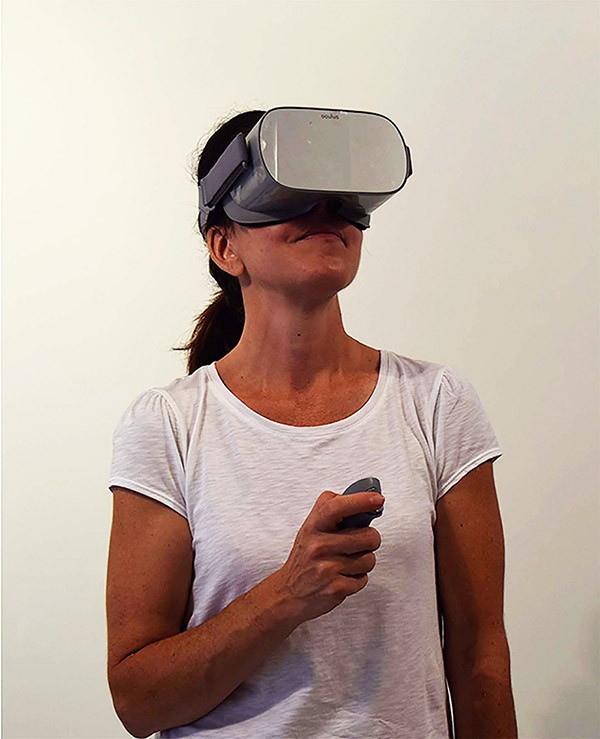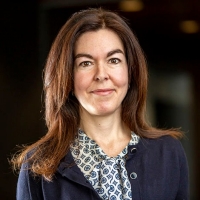Isabelle Guillard is an artist, art teacher and doctoral candidate in Art Education. She completed her master from Vermont College of Fine Arts in Montpelier. Her research interest focuses on the integration of ecological art and environmental education in the school curriculum. She also considers her own artistic practice as a field of research-creation. Her paintings depict natural spaces on the fringes of urban areas, revealing the tangled contradictions inherent in the relation between humans and the environment. Her works are part of public and private collections.
Blog post
Teaching Art in Public Schools in the Time of COVID-19
 The conquest of virtual reality. On the left: Still life with jewels, music instrument and globe, Anonymous. On the right: Still life from Isabelle Guillard
The conquest of virtual reality. On the left: Still life with jewels, music instrument and globe, Anonymous. On the right: Still life from Isabelle Guillard
The pandemic has impacted human life and the whole system on which we depend to accomplish our daily tasks and activities. This unprecedented crisis has forced us to cope with uncertainties, complex situations and new practices, redefining our ways of working through virtual spaces. As an art teacher in public high school, I have faced many challenges involved in putting my courses online and trying to reach my students through a multitude of platforms, including Zoom, Meet and Google Classroom, while others preferred to use Facebook. With this new reality, I had to adapt my lesson plans, criteria and evaluations, considering that not all students had computers, Internet and art materials at home.
Challenges of Online teaching
Teaching art online requires creative ideas, efficient technological tools and good management in order to be able to interact effectively with classes of 25–30 students, apprehend the problematics and offer stimulating art projects that are relevant and significant for students. In their art classrooms, teachers are used to having a controlled environment in which they may follow their students’ participation and get a sense of their understanding. Not being physically “present” and aware of what all the students are doing individually and as a group has been revealed to be one of the major issues in using technology as a primary method of education. At this age, students could be reluctant to show themselves on camera or take part in group discussions. Our weekly communications by email, phone calls or chat had helped to establish social connections and gave students the possibility to express their concerns and find the courage and motivation to pursue their artistic endeavours. Others who knew that their third report card was compulsory, but not essential for their final grade, didn’t find it necessary to complete their school year.
Political pressure on teachers’ practice cannot be overlooked. To support students’ education through remote learning, teachers have to deal with the fact that they didn’t receive the proper training nor the time to prepare for such a transition in their practice. I remember having to train with the help of my colleagues and watching webinars from my school board about the many technicalities that needed to be learned, while helping my students to have access to their classroom information, organizing their schedules and making their assignments. Even though I was lucky enough to have some background in multimedia and my own equipment, I have found myself struggling to balance the demands of training and teaching at the same time. I can imagine how my students were feeling about getting their technological devices from the school and having to solve on their own the deficiencies of technological gaps.
Beyond my discipline, through “tutoring” I had to report students at risk, absent from distance learning or not submitting the requested work by learning how to use new digital tools and methods. These instrumental procedures were intended to keep track of students and gather data on their progress. Replacing the percentage marks with letter grades has surely facilitated the treatment of success rates, but in the end was the experience meaningful for students? Having to cope with this ambivalent situation two months prior to the end of the school year felt overwhelming and stressful for everybody, including parents.
Back-to-school plan and its many unresolved issues
Now that we are back to school with new regulations, and considering the number of students in my classroom, I am wondering how distancing will be kept and how students will be able to stay in their places while expressing themselves and manipulating materials, especially for those with special needs. In order to assist students and provide guidance on how to accomplish these changes with new pedagogical approaches, teachers should be given time outside their teaching periods to work collaboratively instead of individually through their various disciplines, in order to share their expertise, receive training and transpose their new knowledge into a quality education. These formative experiences will not only increase teachers’ confidence, but their professional autonomy in mastering technology. In the case of a second wave, we have to be ready to switch quickly to distance learning. With the additional budget announced by the ministry, I do hope that all students will have access to reliable Wi-Fi, and available programs to write and upload their documents and ensure equity for everybody. More common and consistent digital communication tools between students, parents and teachers would also be essential to facilitate the process of exchange.
New technologies and the learning of Art
 Virtual reality
Virtual reality
While internet-connected classrooms have been shown to have a positive impact on students in schools where they are available, ICT (information and communication technologies) will no longer be merely an option, but a necessity in our education system moving forward. To this point, many questions remain: What will be the condition under which we will be able to use our knowledge and skills to promote the learning process of students with technology? Digital technology can actually allow teachers “to find entirely new answers to what people learn, how people learn, where people learn and when they learn,” such as finding students’ interests related to specific tasks and concepts, or recognizing the types of problems that are difficult for them.
The challenges that surface when combining traditional art practice with technology could be a way to develop new strategies for the teaching of art, and for prompting students to take initiative related to the monitoring of their own progress and results, giving them the responsibility to take control of their actions with the guidance of the teacher. Having already started to look for new ideas, I just can’t wait to meet my students and start the coming year. Museums have been a great source of inspiration, with many of them offering exhibitions in 360° or art activities, such as the famous #Gettychallenge which turned to social media to engage the public in reproducing famous artworks using household items. With this in mind, I wish you all a good semester!
About the author


